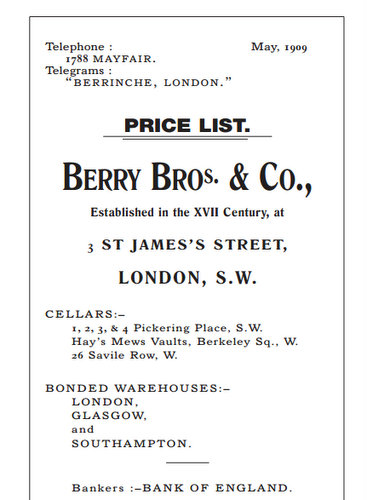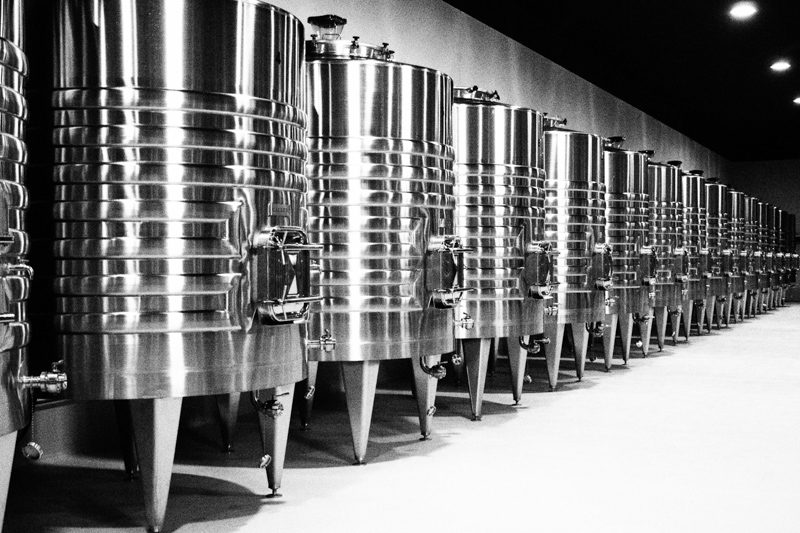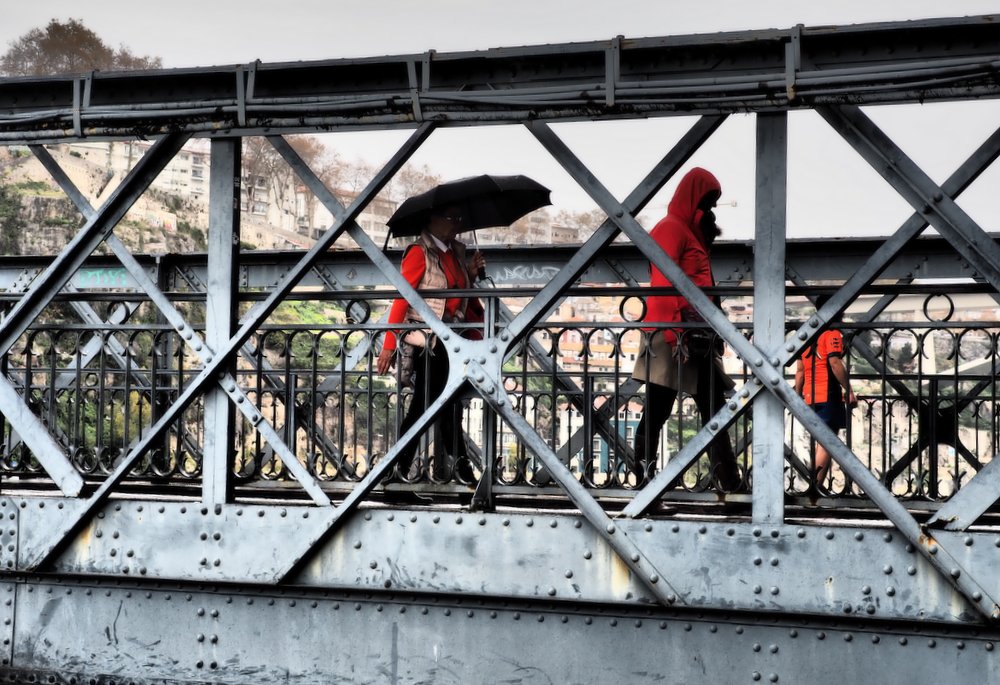Was Bordeaux more affordable in times gone by? With the help of a 1909 price list from Berry Bros & Rudd and the website www.measuringworth.com, I thought I’d find out.
Here’s the 1909 BBR Bordeaux list, with prices in shillings per dozen (there were 20 shillings in the pound, until 1971):
CLARET.
1904
Ch. Talbot … … … … 30/-
Ch. Pichon Longueville … … 33/-
Ch. Gruaud Larose Sarget … 34/-
Ch. Canon, 1er St Emilion … 36/-1905
Ch. La Mission Haut Brion Ch.bottled 42/-
Ch. Margaux, 1st growth ” 54/-
Ch. Latour, 1st growth ” 50/-
Ch. Mouton Rothschild, ” 50/-
Ch. Haut Brion, 1st growth ” 60/-1899
Ch. Léoville, Poyferré … … 42/-
” ” Lascases … … 45/-
Ch. Brown Cantenac … … 45/-
Ch. Lafite … … … … 72/-1896
Ch. Lafite … … … … 78/-
Ch. La Mission Haut Brion 72/–1893
Ch. Léoville, Lascases … … 60/-
Ch. Cheval Blanc … … … 78/-1888
Ch. Smith Haut Lafite … … 72/-1878
Ch. Lafite Ch. Bottled … … 180/-
Ch. Palmer Margaux … … 96/-
1877 Ch. Léoville … … … … 108/-
1874 Ch. Larose, in Wine Bottles … 66/-
1870 Ch. Margaux … … … … 90/-
1869 Ch. Lafite, Grand Vin, Ch. Bottled 200/-
Now let’s look at how much a shilling was worth in today’s prices. This gets a little complicated, because it depends on which measure you use. Using the retail price index (RPI) changes, a shilling then is worth £4.26 today. But if you look in terms of income value (that is, the relative average income that would be used to buy a commodity, calculated using GDP per capita), then a shilling then is worth the equivalent of £25.90 today. That’s quite a difference.
The 1904 Talbot is therefore priced at either £127.90 per case, or £777.10. The former makes it much more affordable; the latter makes it more expensive than 2004 (£350 per case in bond seems to be the current market price). Maybe a fairer comparison would be with 2005 (1904 was rated as an excellent, ample vintage in Bordeaux), in which case the market price for Talbot is £420 in bond.
What of the 1905 Latour, from another very good year. At 50 s a case, this works out at £213 or £1295, depending on which comparison you use. Compare that with the market price for 2005 Latour (£7000 in bond per case), and it seems that the very top wines were more affordable then than they are now, with the differential between very good and the very top Bordeaux wines being much smaller in 1909 than it is today.
Of course, I am not an economist, so I only have limited understanding of these issues. I’d love to have input from those more economically literate than I am.
4 Comments on Bordeaux prices, then and now



The link to the 1909 list no longer works on the BBR blog, but I recall when I last looked at it I compared the difference between the cheapest claret and the classed growths then and Berrys Good Ordinary Claret now and the classed growths. My memory is shaky but I think you paid about 6 times the cost of a basic claret for a 1st growth then, and now you could get 58 bottles of Good Ordinary Claret (£9) for one of Ch La Tour 2008 (£525).
I regularly bought 4th & 5th growths in the 1970’s, they weren’t that much more than my every day bourgeois clarets.
Thanks for this interesting post, Jamie. Although I don’t spend a lot of time with calculations of this sort, I would use the RPI to compare the real prices between one year and another and the percentage change in relative average income measure if I was trying putting together a table of percentage changes in the average real prices. The average income measure is a bit better for dynamic time series analysis because it updates the base market basket yearly, but for that reason it is less good for static comparisons. The RPI is an imperfect measure for long term comparisons, but good enough in this case to draw the conclusion that, yes, those wines were cheaper then in real terms.
Cheers,
Mike
Jamie,
It’s likely I’m no more economically literate that you, but this is something I wrote some time ago after reading George Saintsbury’s book – Notes on a Cellar book, which he wrote in the late 1800’s. The middle paragraph a direct quote, the rest my comments:
Just in case you ever thought people considered Bordeaux cheap at the time of purchase:
Of those unsatisfactory ’70’s I had at various times Lafite, Latour, Margaux, Haut Brion, Pichon-Longueville, Lagrange, and Croizet-Bages. The seven wines, taking only a dozen of each, cost, at the high prices then ruling for claret, about thirty pounds.
30 pounds for 7 cases of Bordeaux (4 first growths, a second, third and a fifth)!!!
Saintsbury was an academic on an annual salary of 600 pounds. So 30 pounds would be 5% of his annual income.
I think this emphasises the fact that people will always complain about the price of classified Bordeaux. The lesson: If you have the funds and inclination – buy when you get the chance.
I am inclined to agree with the previous comment… If you can afford to buy…buy now at 1st release En-primeur price and 9 times out of 10 you will see happy gains over the medium to long term. Fine wine will never get cheaper, even if the Market crashes again. Just keeping up with inflation will ensure you pay less now than 5 or 10 years time!